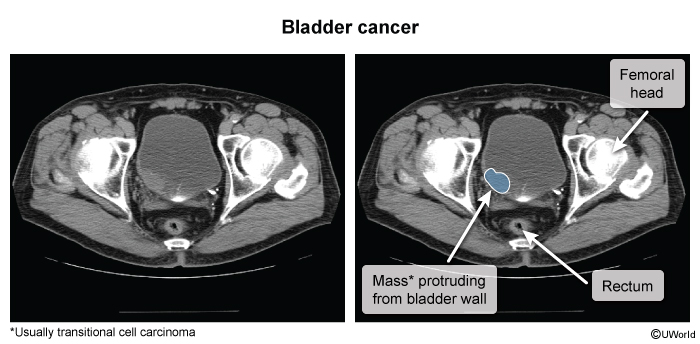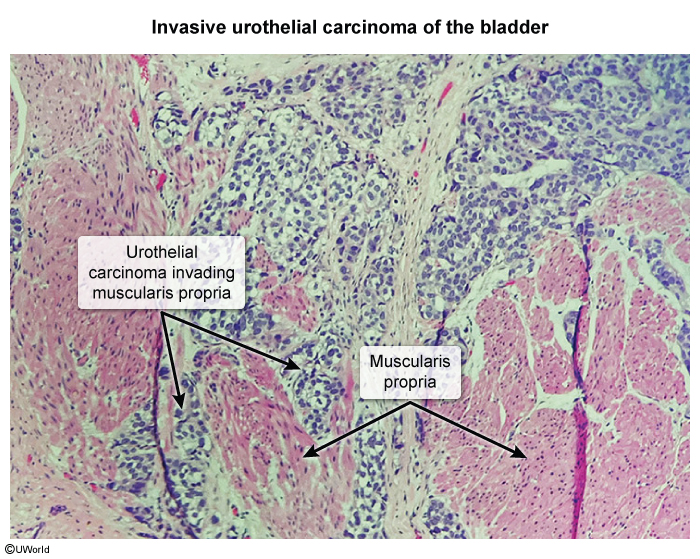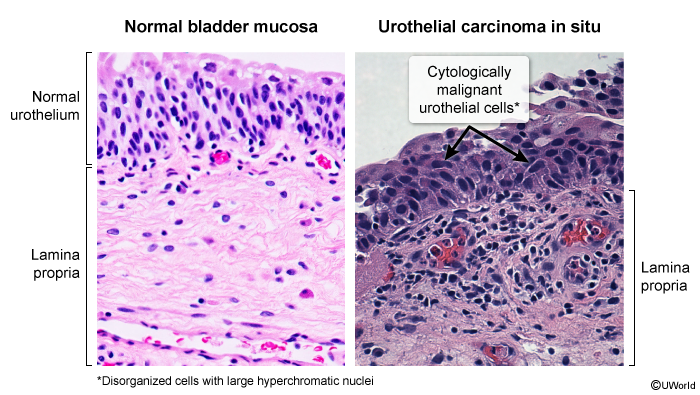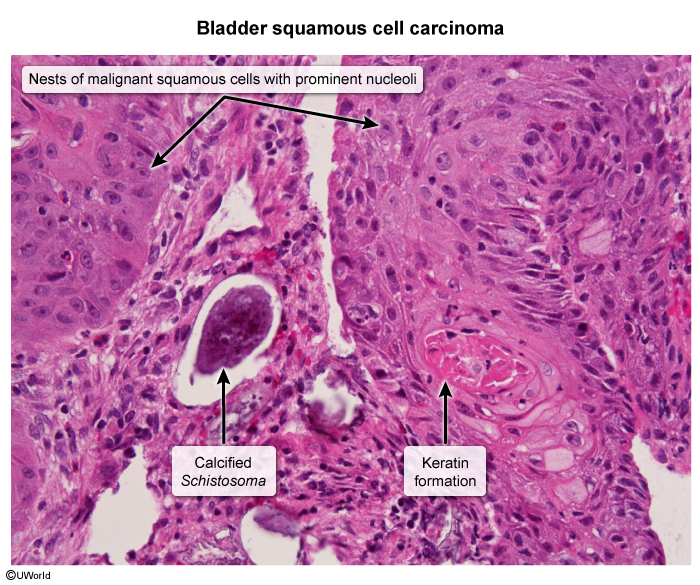Bladder Cancer: Urothelial (Transitional Cell) And Nonurothelial Carcinomas
Article Sections
Introduction
Bladder cancer is the most common urologic malignancy and ranks as the tenth most frequently diagnosed cancer worldwide. It predominantly affects older adults, particularly those age 65-75, and occurs approximately 3 times more often in males than in females. Geographic variations in incidence are notable, with higher rates observed in high-income countries, partly due to differences in exposure to risk factors (eg, smoking, occupational carcinogens). This article focuses on the predominant cause, which is urothelial (transitional cell) carcinoma.
Pathophysiology and risk factors
Bladder cancer usually originates from the urothelial (transitional) cells that line the inner surface of the bladder; it is also known as urothelial carcinoma (comprises 90% of bladder cancers in the developed world). (Urothelial carcinomas can also arise in the renal pelvis and ureters; these share similar clinical behaviors but are less common.) Other histologic subtypes (<10%) include squamous cell carcinoma, adenocarcinoma, and small cell carcinoma. The pathogenesis of bladder cancers involves a multistep process of genetic and epigenetic alterations that disrupt normal cell cycle regulation, apoptosis, and DNA repair mechanisms.
Continue Learning with UWorld
Get the full Bladder Cancer: Urothelial (Transitional Cell) And Nonurothelial Carcinomas article plus rich visuals, real-world cases, and in-depth insights from medical experts, all available through the UWorld Medical Library.
Figures
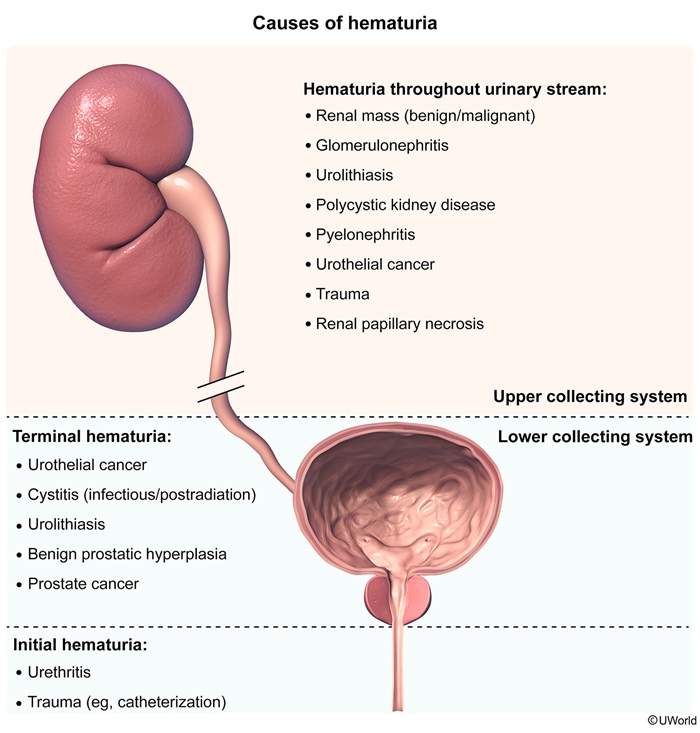
Images
